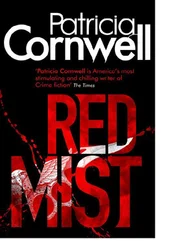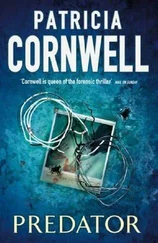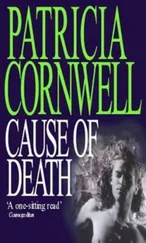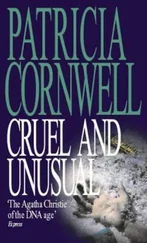“Yes. When we’re done here and he’s safely back in the water and out of range.”
“Seems like he’s got very minor injuries, so they won’t be trying to transport him, not that they could have,” Klemens says. “You’d need a flatbed truck, and he probably wouldn’t have survived rehab anyway. There’s never been a leatherback from around here that did. All they know is the open ocean, swimming from continent to continent. You put them in a tank and they just keep swimming into the side of it until they beat themselves to death. Pelagic creatures don’t understand what a wall is. Kind of like my sixteen-year-old son.”
I watch the rescue team in green Windbreakers and latex gloves, the leatherback puffing out his throat and making ominous sounds, whistling and clucking, and I scan the bright choppy water. I think about what I need to do. There must be at least a dozen boats around us now, people attracted by the strobing red lights and the stunning creature on board, and no telling what’s already hit the Internet.
I don’t want an audience when I recover the body, and I sure as hell don’t want it filmed by smartphones and the media. What terrible timing for me to retrieve a dead body from water, and I think uncomfortably of Mildred Lott and my idiotic comment about her turning into soap.
“The blond girl there.” Klemens nods at Dr. Pamela Quick. “She says he’s the biggest one they’ve ever seen, maybe even the biggest on record, close to ten feet long and more than a ton, and could be a hundred years old. Take a good look, Doc, because you’re not likely to ever see something like this again. They don’t survive long enough to get this big anymore because of boat strikes and entanglements and ingesting trash like plastic bags and party balloons they confuse with jellies. It’s just one more example of us wrecking the planet.”
Two transom steps lead from the dive platform up to the recovery deck under us, which is crowded with four marine biologists, and piles of towels and sheets, and tough plastic cases, ski bags, and other field kits containing emergency drugs and rescue and medical equipment. From where I’m standing, downwind of the leatherback, I detect his briny smell and hear him scraping the platform as he strains against his yellow harness, his every movement slow and heavy and suggestive of enormous physical power. The loud blasts of his breaths remind me of air moving through a scuba regulator, and then his throat expands again and he emits a deep guttural roar that makes me think of lions and dragons and King Kong.
“You hear that behind you on a dark beach, it would be a heart attack,” Klemens says.
“What else have they done so far?” I ask.
“Cut the lines off of him.”
“I hope they saved them.”
“I’m not sure what you could tell from them.”
“You never know until you look,” I reply.
“PIT tagged him right before you got here, and I can tell you he doesn’t like needles,” he adds.
Pamela Quick works a spinal needle deep into the neck for a blood draw, while a second rescuer, a young man with brown shaggy hair, reads a digital thermometer and announces, “Temp’s up two degrees. He’s starting to overheat.”
“Let’s get him covered and wet him down,” Dr. Quick decides, and she glances up at me and for a moment we are eye to eye.
They drape the ridged carapace with a wet white sheet, and I recall her tone to me on the phone earlier, her adamant way of telling me what she needed to do. It was my distinct impression that she didn’t believe she required my permission and didn’t want my involvement, and now she just looked at me resentfully it seemed, as if I have something personal with her that I know nothing about.
She squeezes ultrasound gel on the turtle’s neck, moving around a handheld Doppler probe with a built-in loudspeaker to monitor the heart rate. The sound of the massive reptile’s blood flowing is like the roaring of a river or a rushing wind.
“Normosol to replenish his electrolytes.” She tears open the packet of a solution set, a twenty-gauge needle attached to an IV line. “Ten drops per one mil. He’s stressed.”
“Well, I would be, too. He’s probably never been around humans before,” Klemens observes, and I’m aware of the weird familiarity I feel that isn’t about him.
A sad curiosity runs through me like a low-voltage current, then is gone, and I imagine my father seeing such a marvel. Sometimes I wonder what he’d think of the person I’ve become.
“They say a turtle like this one’s been on land only once in his life. Right after he was hatched on some beach halfway around the world and crawled across the sand and into the water. And he’s been swimming ever since.” Klemens talks expressively with his hands the way my father did until he was too weak from cancer to lift them from the bed. “So he’s not happy resting on top of something, in this case, the platform. Not to be crude about it, but the only other time he’s got something under him is when he mates. What do you want to do about her?”
He looks at the heaving water where the large yellow sausage fender bobs, which strikes me as quite odd, and I say so.
“You think it’s attached to a conch pot or cinder blocks?” I point out. “Why?”
“When they were pulling the buoy line close with the grappler to cut the fishing line and get the turtle on board?” he says. “For a couple of minutes the body was at the surface. Her head was.”
“Jesus. I hope we’re not going to see that on TV.” I look up at a second helicopter that has moved in, hovering directly over us, a white twin-engine, with what appears to be a gyrostabilized camera system mounted on the nose.
“I think all they’re interested in is the turtle and got no clue what else is on the line.” He follows my gaze up. “The first chopper got here just as we were pulling him on board, so I don’t think they filmed the body or know about it. At least not yet.”
“And what’s gone out over the radio?” I ask.
“Not a distress call, for obvious reasons.” He means any calls about the dead body didn’t go out over the usual channels that might be monitored by mariners and the media.
“Did anybody touch it with the grappler or disturb it in any way?”
“Nobody got anywhere near it, and we recorded the whole thing with our onboard cameras, Doc. So you got that if you need proof in court.”
“Perfect,” I tell him.
“When the body was just at the surface you could barely make out the shape of a wire mesh pot about four foot square, I’m guessing.” He continues staring at the sausage buoy, as if he can still see the pot he’s describing. “It’s attached by maybe twenty, thirty feet of rope and obviously has something in it that’s heavy as hell. Rocks, cinder blocks, I couldn’t tell.”
“And the body’s tethered to this line? We’re sure it still is? We’re sure there’s no way it got loose when they were pulling the turtle in and cutting him free?”
“I don’t think it’s possible that poor lady’s going anywhere. Tied around the lower part, possibly the legs, the ankles.” He stares at the yellow bumper moving brightly on the water and the yellow line dropping taut and straight below it, disappearing into the dark blue bay. “An older woman with white hair is what it looked like to me, and then when they got the turtle cut free, she dropped below the surface again, the weighted conch pot pulling her back down.”
“She’s tethered to the buoy line, which is tied around her legs, possibly? Yet she’s upright?” I’m having a hard time envisioning what he’s describing.
“Don’t know.”
“If her head appeared first, she’s upright.”
“Well, she definitely was headfirst,” he says.
Читать дальше












